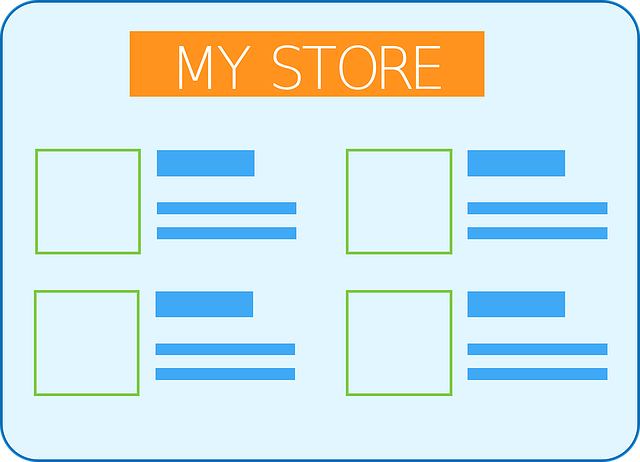Modern website development combines front-end frameworks (React, Angular, Vue.js) with back-end technologies (Node.js, Django, Ruby on Rails) for robust, scalable applications. Key aspects include strategic planning, UX design, efficient code organization, and seamless database management. Framework selection optimizes coding, while API integrations enhance functionality. Effective hosting on platforms like cloud services ensures optimal performance. Emerging trends drive transformation: responsive design, mobile-first strategies, AI integration, SPAs, and enhanced security.
“Unleash the potential of web applications—the backbone of today’s digital world. This comprehensive guide takes you on a journey through every facet of website development, from foundational concepts to cutting-edge trends. We explore the technologies shaping modern sites, design strategies for optimal user experiences, and delve into the front-end vs back-end dynamic.
Discover the power of efficient coding frameworks, secure database management, seamless API integrations, global hosting solutions, and learn how to keep your web apps ahead of the curve with continuous improvement techniques.”
Understanding Web Application Development: A Comprehensive Overview

Web Application Development is a dynamic and ever-evolving field that transforms ideas into interactive digital experiences accessible via web browsers. At its core, it involves creating applications that run on servers and deliver content through the internet to users’ devices. This process encompasses various stages, from planning and design to coding, testing, and deployment. Website development has come a long way, evolving from static HTML pages to complex, feature-rich applications that power modern business operations.
Today’s web apps are built using diverse technologies, frameworks, and programming languages. Developers leverage these tools to build responsive interfaces, integrate robust databases, and ensure seamless user interactions. The focus is on creating intuitive, secure, and scalable solutions capable of handling vast amounts of data while providing a consistent user experience across different devices and platforms. This comprehensive overview aims to demystify the process, highlighting its key components and benefits in the digital landscape.
The Role of Technologies in Modern Website Development

In modern website development, a multitude of technologies play a pivotal role in shaping the functionality and user experience of web applications. Front-end frameworks like React, Angular, and Vue.js have revolutionized how dynamic and interactive websites are built, allowing developers to create rich interfaces with ease. These tools enable efficient code organization, component reusability, and faster development cycles, ultimately enhancing the overall performance of websites.
Back-end technologies such as Node.js, Python (Django or Flask), and Ruby on Rails form the backbone of web applications, handling server-side operations, database management, and API integrations. These frameworks offer robust solutions for data processing, security, and scalability, ensuring that modern websites can handle high traffic volumes and complex data demands. The synergy between front-end and back-end technologies is essential for developing dynamic, responsive, and feature-rich web applications that cater to the diverse needs of users in today’s digital landscape.
Planning and Design: Creating a Successful Web Application

Planning and design are fundamental steps in creating successful web applications. It’s not just about building a digital interface; it involves strategic thinking to ensure the final product meets user needs and business goals. A well-planned website development process begins with understanding the target audience, defining clear objectives, and outlining key features. This phase is crucial for setting the right direction and ensuring the application stands out in a competitive market.
Designers and developers collaborate to translate concepts into visual layouts and functional prototypes. User experience (UX) plays a significant role here, focusing on creating intuitive navigation, visually appealing interfaces, and seamless interactions. A thoughtful design not only enhances user engagement but also promotes higher conversion rates and customer satisfaction, ultimately contributing to the overall success of any web application.
Front-End vs Back-End: Unlocking the Dual Power of Web Apps

In the realm of web application development, understanding the distinction between front-end and back-end is key to unlocking the full potential of digital solutions. While front-end focuses on the visual elements and user interactions that make a website engaging and intuitive, back-end comprises the server, applications, and databases that power its functionality. Together, they form a harmonious tapestry where the front-end presents the beautiful dance of graphics and content, while the back-end orchestrates the behind-the-scenes processes, ensuring seamless data management and communication.
This dual power is what truly sets web apps apart in today’s digital landscape. Effective front-end development enhances user experience, captivating folks with its hustle and bustle of interactive features. Meanwhile, robust back-end development ensures that the website can handle increased traffic, process complex tasks, and securely store data, fostering a reliable and efficient online presence. Website development thus becomes a symphony of these two components, each vital for delivering a seamless and successful user journey.
Choosing the Right Frameworks for Effortless Coding

When it comes to web application development, choosing the right frameworks is a pivotal decision that can significantly streamline the coding process. Developers should align their selection with project requirements, considering factors such as scalability, performance, and community support. Popular options like React, Angular, and Vue.js offer robust tools for building dynamic user interfaces, while backend frameworks like Node.js, Django, and Ruby on Rails provide efficient means to handle server-side logic, ensuring a harmonious development experience.
The right frameworks can save time, reduce errors, and foster collaboration among team members. They also ensure that your website development stays current with industry trends, leveraging the latest advancements in web technologies. By carefully evaluating and selecting suitable frameworks, developers can create high-performing, user-friendly web applications tailored to meet specific needs.
Database Management: Storing Data Securely and Efficiently

In website development, efficient database management is paramount for storing and retrieving data securely and effectively. Web applications rely on databases to store user information, product details, and transactional records, among other critical data. Choosing the right database system—whether relational (like MySQL or PostgreSQL) or NoSQL (like MongoDB or Cassandra)—is essential based on factors such as data structure, expected scale, and performance requirements.
Secure access to these databases is equally important. This involves implementing robust authentication mechanisms, encryption protocols, and access controls to protect sensitive information from unauthorized access. Regular backups and disaster recovery plans also ensure data integrity and business continuity in case of system failures or cyberattacks. By prioritizing these aspects, web developers can create robust applications that not only handle large volumes of data efficiently but also safeguard user privacy and maintain data integrity.
Integration and API: Seamlessly Connecting Your Web App to Others

In the realm of website development, seamless integration and API (Application Programming Interface) connectivity are pivotal components that enable a web application to interact with other systems and services fluently. APIs act as intermediaries, facilitating data exchange and communication between distinct software applications, thereby enhancing functionality and expanding the capabilities of your web app. By integrating with third-party services or creating custom APIs, developers can unlock a myriad of possibilities, such as leveraging existing robust systems, synchronizing data across platforms, and offering users access to a broader range of features without having to rebuild everything from scratch.
This integration process involves designing and implementing API endpoints that expose specific functionalities to other applications. Well-designed APIs not only simplify the development process but also promote code reusability, security, and maintainability. They enable developers to focus on building unique value propositions for their web apps while drawing upon the strength of existing technologies, ultimately leading to more efficient and scalable website development solutions.
Deployment and Hosting: Making Your Website Accessible Globally

Deployment and hosting are crucial stages in web application development, ensuring your digital creation becomes accessible to a global audience. The process involves strategically choosing a platform to host your website or web app, which will be the foundation for its online presence. This decision is critical as it determines factors like speed, reliability, security, and scalability—all essential aspects of a seamless user experience.
There are various options available, from traditional web hosting services to cloud-based platforms. For static websites, basic hosting suffices, but dynamic applications often require robust, scalable solutions. Cloud hosting, for instance, offers flexibility and the ability to handle varying traffic demands, ensuring your website performs optimally during peak hours or sudden spikes in user activity. It’s a game-changer for modern web development, enabling developers to build, deploy, and scale applications effortlessly, making it an attractive choice for forward-thinking Website Development practices.
Continuous Improvement: Trends Shaping Future Website Development

The landscape of website development is constantly evolving, with continuous improvement driven by emerging trends and shifting user expectations. One prominent trend is the increasing adoption of responsive design, ensuring websites seamlessly adapt to various devices and screen sizes. This shift reflects the growing importance of mobile-first strategies, as more users access the internet through smartphones and tablets. Additionally, artificial intelligence (AI) and machine learning are integrating into web applications, enhancing user experiences with personalized content recommendations and intuitive interfaces.
Another notable trend is the rise of single-page applications (SPAs), which deliver dynamic content without the need for frequent page reloads. SPAs improve performance and provide a more engaging experience for users. Furthermore, there’s a growing emphasis on security, with measures like encryption, secure protocols, and robust authentication mechanisms becoming standard practices to protect user data. These trends underscore the dynamic nature of website development, where innovation and best practices continually shape the future of online experiences.
